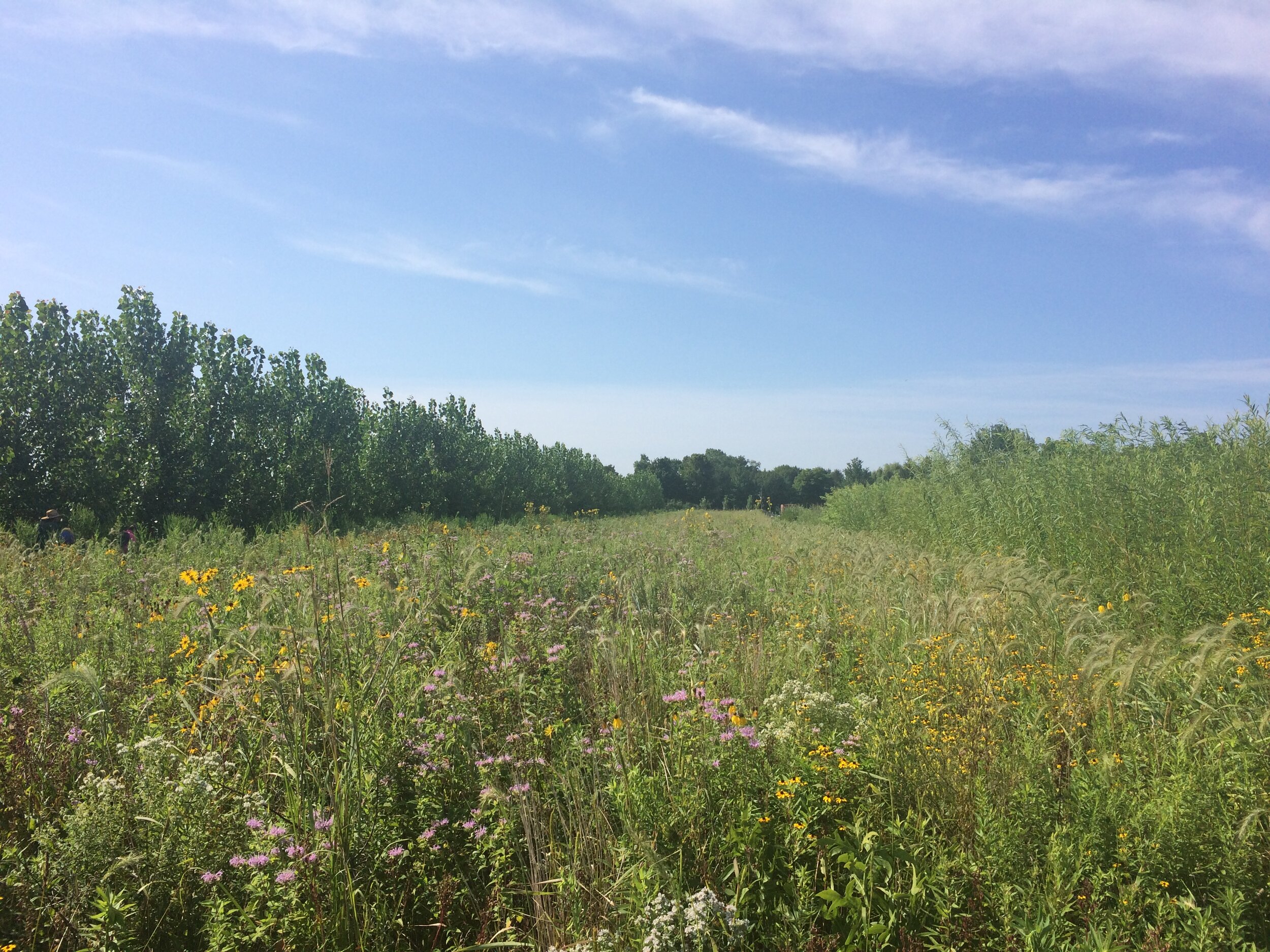
Agroforestry: The Best of Both Worlds
People have had trees in their farmland—and crops in their forests— for thousands of years. Agroforestry is somewhere in between “ag” and “forestry,” where trees play a useful function alongside other crops. It can mean adding a few trees to fully-developed farmland, adding a few crops to fully-mature forest, and everything in between.
Why Agroforestry?
It can seem counterintuitive at first: crops need sun, and trees block the sun. People have spent hundreds of years clearing trees to create farmland. If you have a hayfield, I’m sure a tree fell on the edge of it last year. Ag is “clean” and “civilized,” forests are “messy” and “wild.” Most trees don’t pay the bills year after year, at least by themselves.
But with careful design and planning, trees can play a really interesting role in making our landscapes work, for us and for others. Here’s why: Trees can use vertical space in ways that conventional crops can’t. Landscapes with trees often intercept more sunlight than those without, which means there’s more raw energy being captured by the system. Trees are made of wood, which can be turned in to boards, or at least used by the parasitoid wasps and woodpeckers that feed on crop pests.
And trees have these big, deep root systems, with all kinds of fungal associates, that can provide stability alongside crops that need tillage or fertilizing. Many plants can get “saturated” with sunlight, so a light, shifting shade can actually be beneficial. (See: sunflecks). Trees can make fruit, they make tons of flowers, they have caterpillars that feed songbirds, they’re nice to look at, and once you plant them (if you do it right!) they can be there for dozens, if not hundreds, of years.
An alley cropping system with Chinese chestnuts and winter wheat. Missouri, 2016.
So we have these powerful tools at our disposal!
And there are some standard ways of arranging things that can get us to additive yields, or overyielding. The idea is, if a unit of land is covered with all Crop A, it will produce 100% of Crop A, and 0% of Crop B. The reverse is true, too, of course. But in an overyielding scenario, if you grow half the land in Crop A, and half the land in Crop B, you might get 60% or 70% of the normal yield for both crops. It’s less of each individual crop, but the total productivity can be 120% or 140% of what a monoculture would yield.
It’s the theoretical sweet spot for agroforestry systems, where you get a disproportionate benefit when you add complexity. There’s research to back it up: we know that overyielding systems exist. The hard part is arranging them right.
Types of Agroforestry Systems
Silvopasture
combines widely-spaced trees, pasture, and livestock in mutually beneficial ways.
Trees can provide shade, intercept nutrients and water runoff, support beneficial wildlife, provide feed for livestock , and eventually produce a fruit, nut, or lumber crop. Animals can keep the weeds down, and often provide a financial return sooner than the trees. Pasture grasses minimize soil compaction and provide the basis for the livestock operation.
Alley cropping systems include rows of trees among traditional crops like corn, wheat, or vegetables.
They are spaced widely enough that the crops get enough sunlight. Trees can provide light shade for crops that prefer, they can support beneficial wildlife, and intercept fertilizer runoff. Cultivating crops makes it easy to control weeds among the trees, and they often grow quickly because they get lots of sunlight and fertilizer. Alley cropping is relatively easy to incorporate into existing farms because it can be arranged in rows.
Forest gardens (or “home gardens”) mimic the structure and function of forest ecosystems using edible or otherwise useful plant species.
This usually means a mixture of large trees, small trees, shrubs, and smaller plants. People all over the world have been gardening like this for thousands of years, especially in the tropics. There are many traditions and many variations, but the kinds of forest gardens we can grow in the Northeast can include fruit trees, berry bushes, vegetables, flowers, herbs, and other plants that fill supporting roles.
Riparian buffers are usually a way to separate agriculture from streams.
They help to slow the flow of water runoff, intercept fertilizer, keep streams cool, and provide wildlife habitat. Buffers can include plants that are interesting, edible, profitable, or otherwise useful.
Windbreaks do exactly what they sound like!
Rows of trees slow the wind as it approaches crop or livestock fields. Even a permeable row of trees can slow or redirect the wind, so that the crops are subject to less drought stress, or livestock have less exposure to the cold. They can also provide habitat for beneficial wildlife, and look good while doing it.
Forest Farming usually begins with an intact forest.
Crops like log-grown mushrooms, maple syrup, ramps, and ginseng will all grow under the canopy of an existing forest. Forest farming can enhance the diversity and productivity of woods, often without dramatic changes.








